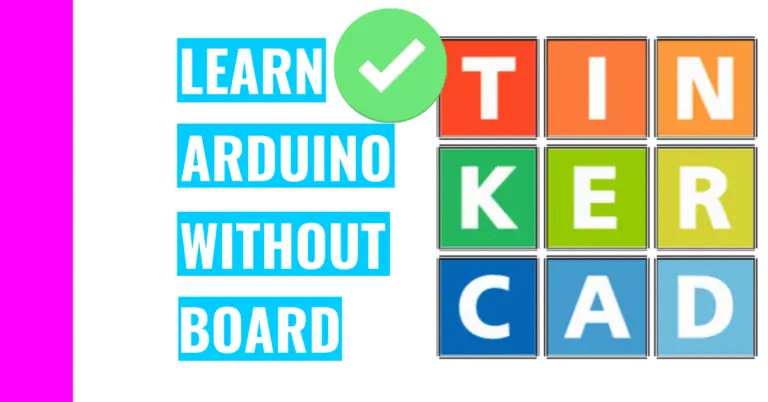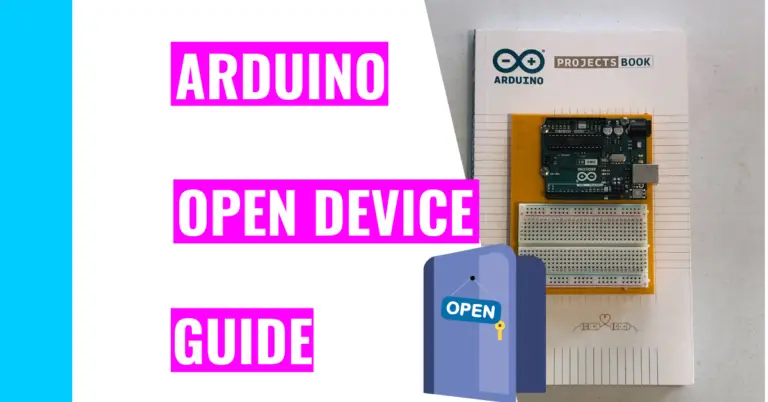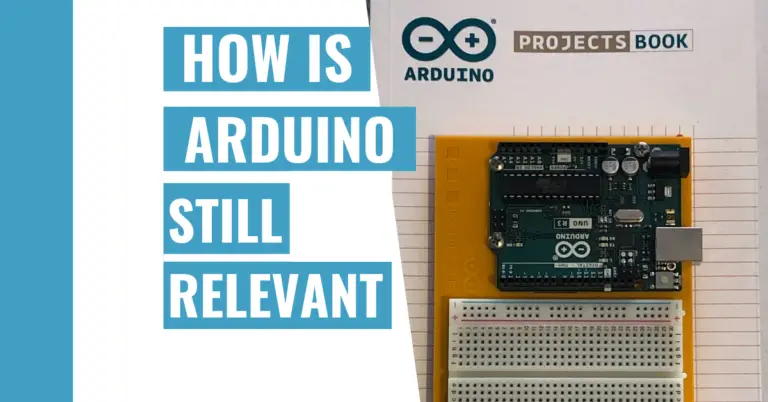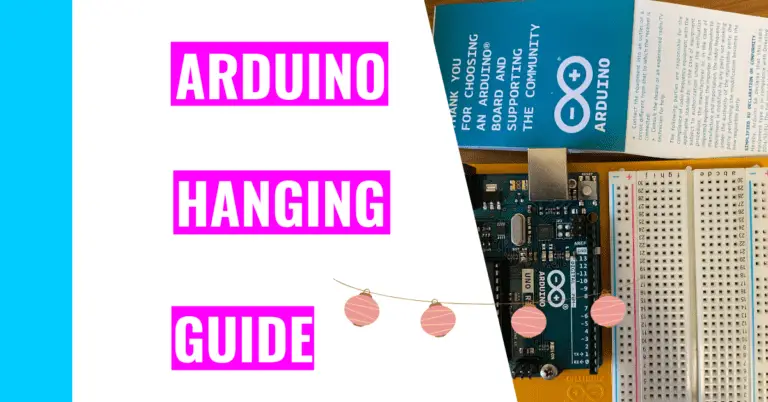How To Make Money With Arduino: Best 11 Options
As you may already know, your Arduino and your expertise with Arduino can provide you monetary value. When I started thinking about making money with Arduino, I was stuck on how to do it. Now that I have thoroughly researched this topic and gained experience in a few areas, I can finally answer the question:
“How can you make money with your Arduino?”
The 11 different ways you can make money with your Arduino are:
- Teaching others about Arduino concepts like programming or electronics
- Making an Arduino prototype that will resolve an issue
- Creating an Arduino project for someone else
- Building and sell shields, modules, or other Arduino accessories
- Making a YouTube channel on Arduino
- Writing an Arduino related book
- Creating software that helps users with their Arduino
- Using your expertise for Arduino consultation services
- Utilizing your Arduino to capture data to sell
- Making some Arduino kits to sell
- Becoming a freelancer
I will go further into these 11 methods for the rest of this article.
1. Teach Arduino concepts like programming or electronics to others

Everyone wants to learn a new skill. Many people would love to dive deeper into the STEM field (Science, Technology, Engineering, and Math) and learn topics such as coding and electronics.
Arduino is so great because it can cover these topics and more. You can offer in-person classes or online courses teaching others how to do those things.
When I first started out, I bought online courses about Arduino over figuring everything out myself because I wanted access to instant, easy, and digestible information.
I would imagine there are many others like me who would pay for these services, so you can do some tutoring or get people to sign up for your class.
Personally, I would do online courses and prerecord each lesson. It’s much easier because I can fix my mistakes in these recordings and I can reach thousands of people rather than seeking each one out individually.
There are popular platforms with millions (if not tens or hundreds of millions) of users that you can upload your courses to such as:
- Udemy
- Coursera
- Skillshare
- Pluralsight
Here are some ideas you can implement in your course:
Programming Topics
- How the Arduino IDE (Integrated Development Environment) works
- How the library in the IDE works
- Best programming practices
If you want to learn more about programming and the best way to write sketches, check out my programming guide. It’s also a great resource for those needing a refresher on basic programming concepts.
- How to debug
- Overview of programming basics
- For example, you can talk about variables, functions, conditionals, loops, etc.
- How processors and sketches work
Electronic Topics
- IoT (the Internet of Things)
- Shields and other Arduino modules
- DC or servo motors
- Electronic basics
- For instance, you can talk about voltage, capacitance, resistors, current, etc.
- Circuitry
To learn more about circuitry, go read my circuitry guide. I’ve also included some great circuit tips (14 to be exact!) that will improve your skills.
- Go over some project builds
Lastly, you can help people study for the Arduino Fundamentals test. If they pass this exam, they will get a certificate from the Arduino company itself, and it’s good for 1 year.
2. Make an Arduino prototype that will resolve an issue

This method is one that many users think of when they want to make some money with their Arduino knowledge. It can be complicated getting started and succeeding with this model.
Not only do you have to find a solution to a legitimate problem that people are willing to pay for, but you also need to create it, find investors to fund this project, locate a manufacturer that can mass produce your product, seek out others for collaboration, advertise, and etc.
Before you get started, you need to answer the following questions:
- Is there any demand for the product?
- Who is your competition?
- What is your financial plan for this project?
- Do you have the necessary financial resources to back it up?
- If not, are you able to find investors?
- Can it be produced? If so, how hard will it be to produce it?
- How will the product be delivered to the customer?
- How long will it take for the product to be delivered.
If you’re serious about this arduous journey, here are the steps for product development:
- Ideation and Concept
- You’re basically trying to locate the problem and explore the different potential solutions you could take.
- Market Research
- You are determining the size of the demand for your solution in the market. You want there to be a demand so that you know the project is worth it before starting.
- Business Plan
- You’d want to determine all the economic factors such as cost of product, shipping, manufacturing, advertising, etc. You want to make sure your product will be justified in its price so people are more willing to buy it.
- Prototype
- This is the part where you actually create a physical mockup (or prototype) of the solution.
- You want to test this repeatedly and then show it to investors and manufacturers, so they can get behind your work.
- Crowdfunding
- This stage is basically a proof-of-concept. Your product isn’t ready yet, but you are trying to get feedback from the market and see if the demand is there in real life.
- Moreover, you can raise additional funds (which demonstrates demand), and you can perfect your sales pitch.
- There are great crowdfunding sites like Kickstarter, Indiegogo, and GoFundMe.
- Design and Production
- This is like the final draft. You’re perfecting the design from what you’ve learned from the crowdfunding and prototype phase. You’re also writing the technical specifications and getting a patent for your design so no one can steal it.
- You can also work on packaging that appeals to consumers.
- Marketing and Distribution
- Now you’re actually mass-producing your product and selling it to as many people as possible.
3. Create an Arduino project for someone else

This is similar to the method above. However, this way of making money is much easier because you don’t have to come up with a problem to solve, you will be paid at an hourly rate, and you only need to worry about creating a product involving an Arduino.
Still, you won’t be reaping the rewards of your product if it does succeed in the market, and you’ll need to find a way to advertise yourself to others seeking your expertise.
Moreover, you’ll need to market yourself so that people will pay you for your service. Check out option 11 for more explanation.
4. Build and sell shields, modules, or other Arduino accessories

Understandably, this technique is similar to option 2, but you are not targeting a large audience. Instead, you are making a niche product that will help Arduino users with their work.
Of course, Adafruit and Sparkfun are dominating the market for shields and other Arduino components, but there is a very specific group of Arduino users that have a similar problem you can tackle.
Here are some steps for creating a shield to sell:
- Locate a specific problem you want your shield to resolve.
- Determine the functions and design of your shield.
- Develop the PCB (printed circuit board) and software necessary for the shield.
- Manufacture your PCB
- Buy the needed electrical components for your PCB.
- Construct the final shield product.
- Advertise your product and sell it.
If you’re serious about making a shield and/or want more information, go check out this YouTube video:
5. Make a YouTube channel on Arduino

Billions of users use YouTube, which means you can talk about a niche topic like Arduino and still make some pretty decent money. You can get paid by showing ads or getting sponsorships. However, you’d need a decent-sized audience to have those two methods work.
When creating your channel, you can make educational videos, entertaining ones, or both. I’d personally prefer to do both since I can obtain a larger audience.
Still, you can definitely make money through informational videos. For instance, Youtuber Ralph S. Bacon has over 34,700 subscribers and YouTuber Paul McWhorter has over 233,000 subscribers, and they both make informational videos.
However, if you want to make more money, you should definitely make entertainment videos like Mark Rober or Stuff Made Here. Create cool, out-of-this-world projects like a glitter bomb or the world’s largest Nerf gun, and you can interject educational tidbits throughout the videos.
6. Write an Arduino related book

This is great for those who have lots of expertise and are strong writers. When you’re writing your book, you need to determine whether you’ll pursue self-publishing or traditional publishing.
When you’re self-publishing, you have to financially back your project and handle fees like cover art, printing, binding, shipping, promoting, advertising, etc.
However, if you choose the traditional publishing path, you don’t have to pay for anything other than a traditional publisher. They’ll handle the factors mentioned above in addition to editing, typesetting, proofreading, warehousing, author royalties, etc.
If you want to learn more about the writing and publishing process, check out the following video:
7. Create software that helps users with their Arduino

This is another option for you to create a product that targets Arduino users. However, this is a digital product, which means that it’s great for those who are strong in programming.
If you can create an online service or tool that can make the lives of many Arduino users easier, you will be handsomely compensated for your work.
Here are some general steps to getting started with a digital tool (similar to all the other processes I mentioned before):
- Determine a problem
- You can find some problems in the Arduino forum.
- You can also fix a problem you’ve had when you worked on an Arduino project
- Identify a demand for your solution
- Create a software tool that will provide that solution
- Test it (repeatedly)
- Finalize the product
- Advertise your product
- Sell or monetize it
Because it’s all digital, there are many different monetization techniques you can subscribe to. Firstly, you can sell access to your tool on a monthly or yearly basis.
For example, the online tool Arduino Cloud is very useful for Arduino users because it lets you store your project in its cloud. Moreover, you can use its cloud interface to create IoT (Internet of Things) projects.
They have a free version, but its capabilities are extremely limited. There are other paid options with varying levels of functions for users. As common sense dictates, the more you pay, the more functionalities you get.
Additionally, instead of actually selling your digitized product, you can make it completely free. How will you make money you ask? Here are a few ways to do that:
- You can put ads on your site.
- However, this depends on the number of users using your site, so you’ll need to make a service that many people will use.
- Use companies like AdSense, Mediavine, Ezoic, etc. to get compensated based on the number of people that view the ads placed by these advertisement companies.
- You can use affiliate links.
- For example, you can create an Arduino simulator like circuit.io that lists the components you would need to buy for the project. Then, direct them to Amazon with your affiliate links and get paid!
8. Use your expertise for Arduino consultation services

There are Arduino users with custom projects that have problems. You can provide them with help as long as you have a lot of experience.
One way you can obtain customers is by letting them come to you. To do this, you need to first create projects and upload them to the Arduino Project Hub. Other users will see your progress, and if they think your creations are cool enough, they will try to copy them.
Some of them will run into problems, and they’ll try contacting you for help (because you’re the one who created it). You can answer the easy questions for free, but if they require more of your time and their problem is more complicated, you should start charging them a fee.
Personally, I’ve found a lot of requests for personalized feedback in Facebook Arduino groups. There, you can message these users and work out the fee for your consultation service and the form of payment.
Additionally, you can look for some unresolved questions on the Arduino forum and try contacting the OP (Original Poster). If these don’t work for you, try freelancing and selling your knowledge and experience on freelance sites such as Upwork or Fiverr (see method 11 for more information).
9. Utilize your Arduino to capture data to sell

Arduinos can serve many purposes, which means you can repurpose them to sense and record valuable data. The data you store should be of value to companies.
For instance, you can work with an electric company and incorporate an Arduino into a project that measures the electricity usage for a household. That company will find that data to be extremely valuable when charging the homeowners.
I’ve also read somewhere about a company that tracked and stored information about the location and movements of airplanes for an airport.
10. Make some Arduino kits to sell

This model has worked for many companies, including the Arduino company itself. Many people want kits since it makes their lives easier.
For instance, when I started my Arduino adventure, I bought a starter kit from the Arduino store. It cost me around $100 and included a guidebook, the Arduino Uno Rev 3, breadboard, and loads of components. Because I was clueless when it came to Arduino (at the time), I found it to be a worthwhile purchase.
Another example focuses on the founder of Adafruit: Limor Fried. She posted videos of her projects on her website, and soon after, viewers continuously pestered her to create kits for them. She saw enough demand and started Adafruit to sell kits. It expanded and grew to become much more than that. She even managed to grow her company by 700% in 3 years!
Yet, because companies like Adafruit and Sparkfun are dominating the Arduino kit market, you need to find a really small, niche market to create and sell your kits to. You don’t want to compete with large companies because they have more resources and can manufacture their kits more quickly and in great quantity.
Similar to the other methods I mentioned, you can scour forums and Facebook Arduino groups to find a small group of users that share the same problem. Then, you can create your kit to advertise and sell to them.
11. Become a freelancer

Becoming a freelancer is great for many reasons. Firstly, you can choose the clients you want to work with, the projects you like, the hours you want to work, etc. More importantly, you can determine your own price at which others can hire you for.
However, when you’re determining your own worth, you need to consider your level of expertise surrounding Arduino. Moreover, you should consider your competitors and how much they’re charging. That way, you don’t get too greedy and overvalue yourself.
In the end, you want people to hire you, not find someone else that’s equally (or even more) qualified than you are at a lower price point.
A good way to demonstrate your worth is by showing previous successful projects, strong testimonials from previous customers, and other skillsets you can bring to the table.
You can see from the picture below that freelancers are listing themselves around $60-$65 dollars an hour. You can see they justify their price with the 100% Job Success feature, a great description, and skills they possess. It’s apparent that they can do more than just tackle Arduino problems.

You can use the following websites to advertise yourself as a freelancer:
- Upwork
- Fiverr
- FlexJobs
- SolidGigs
- Freeup
- Toptal
- GURU
- Freelancer
- PeoplePerHour
- Hubstaff Talent
- Creto
- Outsourcely
Summary – tl;dr (Too Long; Didn’t Read)
Here are the key takeaway points you should keep in mind after reading this article:
- You can make money with Arduino by:
- Teaching others about Arduino concepts like programming or electronics
- Making an Arduino prototype that will resolve an issue
- Creating an Arduino project for someone else
- Building and sell shields, modules, or other Arduino accessories
- Making a YouTube channel on Arduino
- Writing an Arduino related book
- Creating software that helps users with their Arduino
- Using your expertise for Arduino consultation services
- Utilizing your Arduino to capture data to sell
- Making some Arduino kits to sell
- Becoming a freelancer
In the end, I hope this article made enough cents for you to know how to start making money with your Arduino!
References
Through my journey in creating this awesome guide, I used the following source(s) to ensure that I provide the best, relevant information:






